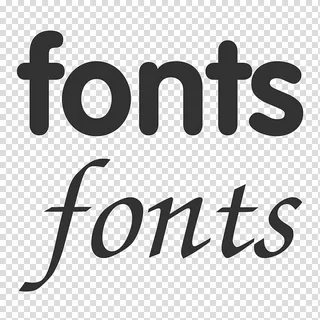In the fast-paced digital age, where information is consumed in bite-sized snippets and attention spans are fleeting, there’s something comforting and timeless about the tradition of newspaper fonts. These fonts, with their distinctive characteristics and historical roots, have played a pivotal role in shaping the visual identity and readability of newspapers for centuries. In this blog post, we’ll take a nostalgic journey through the world of newspaper fonts, exploring their origins, evolution, and enduring appeal.
- A Glimpse into History: The history of newspaper fonts dates back to the earliest days of print journalism. In the 15th century, with the invention of movable type and the printing press, newspapers began to emerge as a popular medium for disseminating news and information. During this time, newspaper fonts were typically serif style fonts, characterized by their legibility and readability in dense columns of text. These fonts were carefully selected to ensure optimal clarity and comprehension for readers.
- The Rise of Classic Newspaper Fonts: As newspapers became more widespread and influential, certain fonts emerged as staples of the industry. Classic newspaper fonts such as Times New Roman, Garamond, and Baskerville became synonymous with the printed word, thanks to their timeless elegance and versatility. These fonts were chosen for their legibility at small sizes, making them ideal for the dense columns of text that were a hallmark of traditional newspaper layout.
- The Evolution of Newspaper Typography: Over time, as technology advanced and design trends evolved, newspaper typography underwent significant changes. With the advent of digital typesetting and desktop publishing in the late 20th century, newspapers began experimenting with new fonts and layouts to adapt to changing reader preferences and technological capabilities. While classic serif fonts remained popular choices for body text, newspapers started incorporating sans serif fonts for headlines and subheadings to create visual contrast and hierarchy.
- Modern Trends in Newspaper Fonts: In the digital age, where newspapers must compete for readers’ attention amidst a sea of online content, typography plays an increasingly important role in attracting and retaining readers. Modern newspaper fonts often combine the timeless elegance of classic serif fonts with the clean lines and contemporary aesthetic of sans serif fonts to create a balanced and visually appealing layout. Designers may also incorporate display fonts for headlines and pull quotes to add personality and flair to the design.
- The Importance of Readability and Legibility: Regardless of the specific fonts chosen, readability and legibility remain paramount considerations in newspaper design. Newspapers are typically read in less-than-ideal conditions – on crowded trains, during rushed breakfasts, or under dimly-lit streetlamps – so it’s essential for fonts to be clear and easy to read even under adverse circumstances. Designers must carefully consider factors such as font size, line spacing, and column width to ensure optimal readability for readers of all ages and abilities.
- Balancing Tradition with Innovation: While newspapers are steeped in tradition, they must also adapt to the changing needs and preferences of modern readers. Today’s newspapers strike a delicate balance between honoring the legacy of classic typography and embracing the possibilities of digital design. While traditional serif fonts continue to anchor the text, designers may experiment with new typefaces, layouts, and color schemes to create a fresh and engaging reading experience for audiences accustomed to consuming content on digital devices.
In conclusion, newspaper fonts hold a special place in the hearts of readers and designers alike, serving as a bridge between tradition and innovation in the ever-evolving world of print and digital media. From the classic elegance of serif fonts to the contemporary flair of sans serif fonts, newspaper typography continues to evolve while remaining true to its roots. By prioritizing readability, legibility, and visual appeal, newspapers ensure that their fonts not only capture readers’ attention but also deliver information clearly and effectively in an increasingly crowded media landscape.





